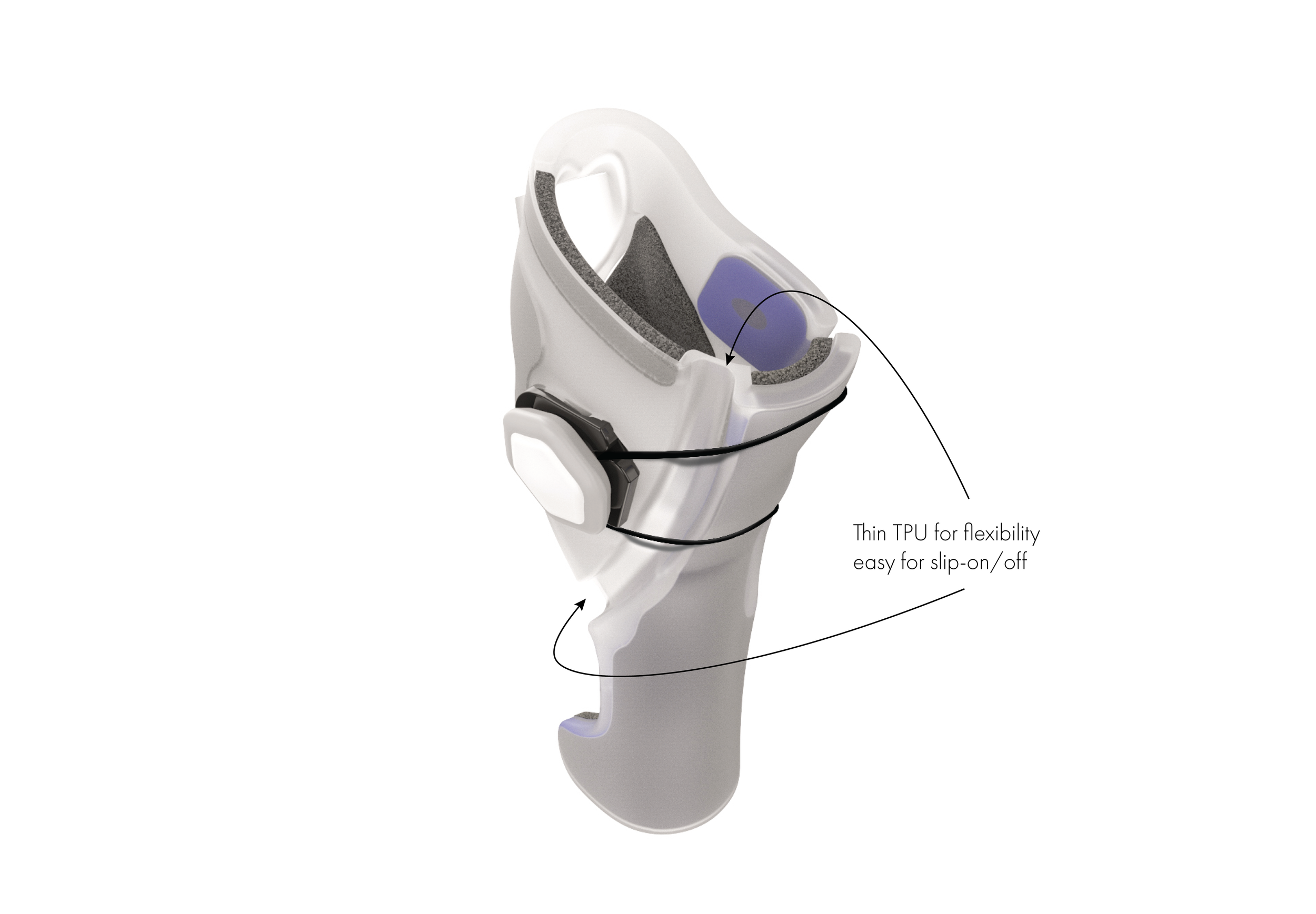introduction
The initial team encountered challenges in enhancing the design. The biomedical engineer sought my expertise to offer design guidance and establish a new direction. After reviewing prior design notes and feedback, I collaborated with the engineering team to identify critical design points. I introduced a hinge design and explored material flexibility to facilitate the ease of putting on and taking off the brace.
Original Design
Problem Definition
Jay, a 19-year-old with Erb's palsy from a birth injury affecting his right arm. To enhance his functionality, his physical therapist recommends a brace to secure his hand in a neutral position, promoting grip strength and muscle development. Jay's ideal brace should be wearable for 16+ hours, offer strong support, be comfortable, breathable, and sterile. Despite testing numerous braces, none have met these criteria or improved Jay's functionality.
Solution
In the development of Jay's custom brace, a focus lies on securely maintaining his hand/wrist in a neutral position, emphasizing breathability, comfort, and aesthetic subtlety. Utilizing 3D scan and MRI images of Jay's arm, digital models are created with precision through computer-aided programs. The incorporation of 3D scanning and printing expedites design iterations, enabling swift testing and refinement based on Jay's feedback. This approach ensures the creation of a tailored orthotic device that precisely meets Jay's unique needs.















